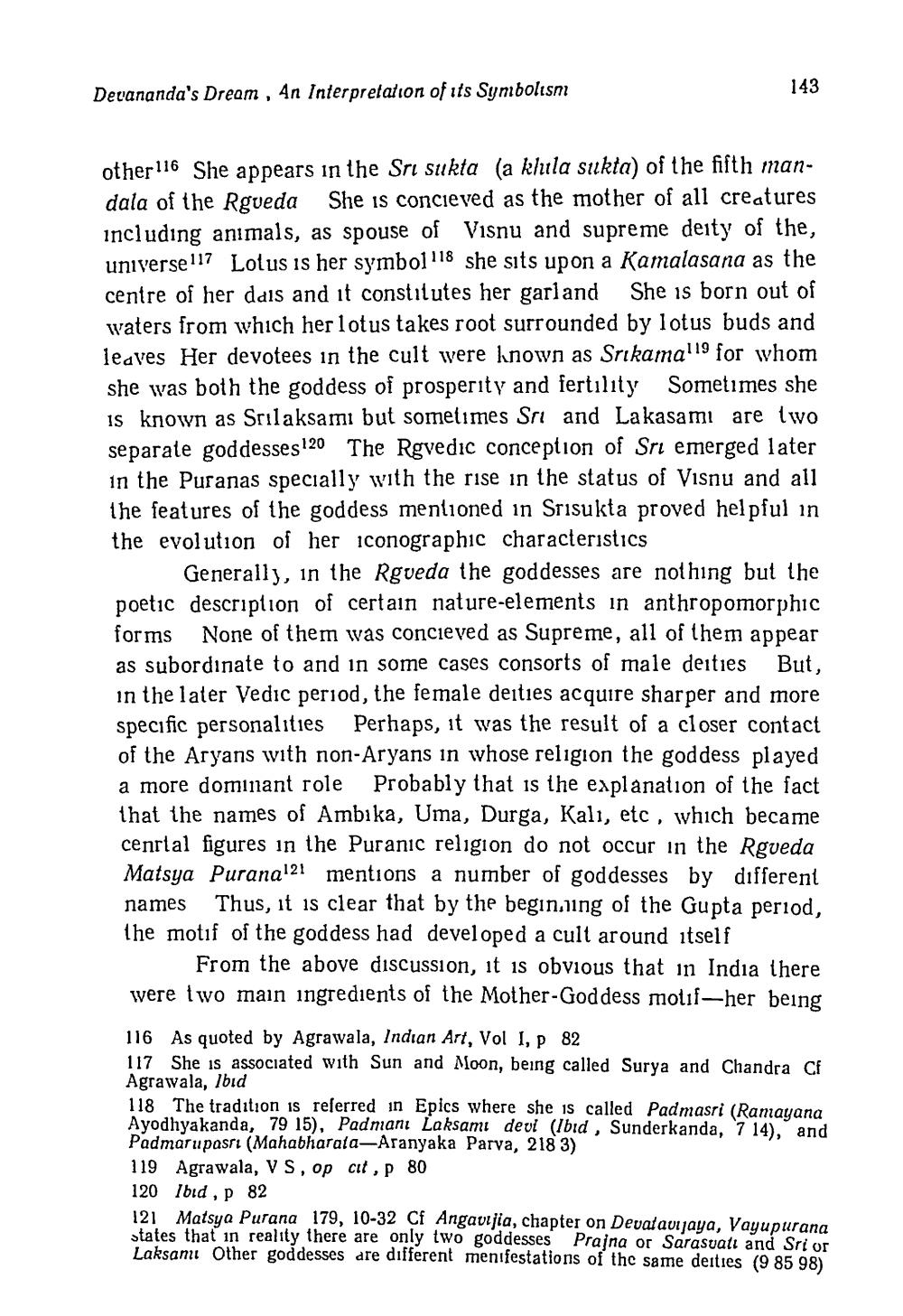________________
143
Devananda's Dream , An Interpretation of its Symbolism
other 116 She appears in the Sri Sukta (a khula sukta) of the fifth mandala of the Rgueda She is concieved as the mother of all creatures including animals, as spouse of Visnu and supreme deity of the, universe117 Lotus is her symbol 118 she sits upon a Kamalasana as the centre of her dais and it constitutes her garland She is born out of waters from which her lotus takes root surrounded by lotus buds and leaves Her devotees in the cult were known as Srikamall9 for whom she was both the goddess of prosperity and fertility Sometimes she is known as Srilaksamı but sometimes Sri and Lakasami are two separate goddesses 20 The Rgvedic conception of Sri emerged later in the Puranas specially with the rise in the status of Visnu and all the features of the goddess mentioned in Srisukta proved helpful in the evolution of her iconographic characteristics
Generally, in the Rgueda the goddesses are nothing but the poetic description of certain nature-elements in anthropomorphic forms None of them was concieved as Supreme, all of them appear as subordinate to and in some cases consorts of male deities But, in the later Vedic period, the female deities acquire sharper and more specific personalities Perhaps, it was the result of a closer contact of the Aryans with non-Aryans in whose religion the goddess played a more dominant role Probably that is the explanation of the fact that the names of Ambika, Uma, Durga, Kali, etc, which became cenrtal figures in the Puranic religion do not occur in the Rgveda Matsya Puranal21 mentions a number of goddesses by different names Thus, it is clear that by the beginning of the Gupta period, the motif of the goddess had developed a cult around itself
From the above discussion, it is obvious that in India there were two main ingredients of the Mother-Goddess motif-her being
116 As quoted by Agrawala, Indian Art, Vol I, P 82 117 She is associated with Sun and Moon, being called Surya and Chandra Cf Agrawala, Ibid 118 The tradition is referred in Epics where she is called Padmasri (Ramayana Ayodhyakanda, 79 15), Padmani Laksami deul (Ibid, Sunderkanda, 7 14), and Padmarupasrı (Mahabharala-Aranyaka Parva, 218 3) 119 Agrawala, VS, op cit, p 80 120 Ibid , p 82 121 Matsya Purana 179, 10-32 Cf Angavijia, chapter on Devatavijaya, Vayupurana states that in reality there are only two goddesses Prajna or Sarasuali and Srior Laksamı Other goddesses are different menifestations of the same deities (9 85 98)




